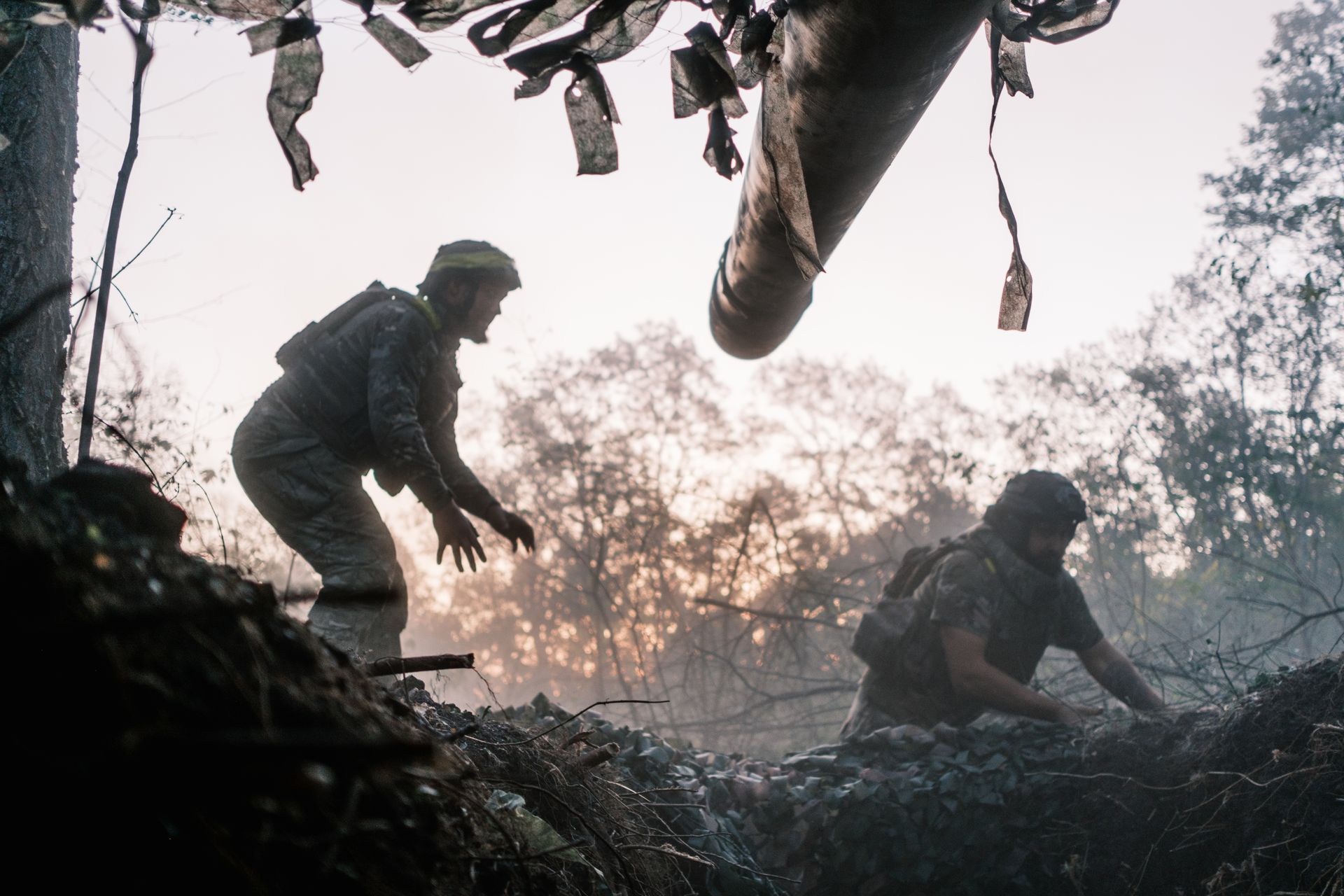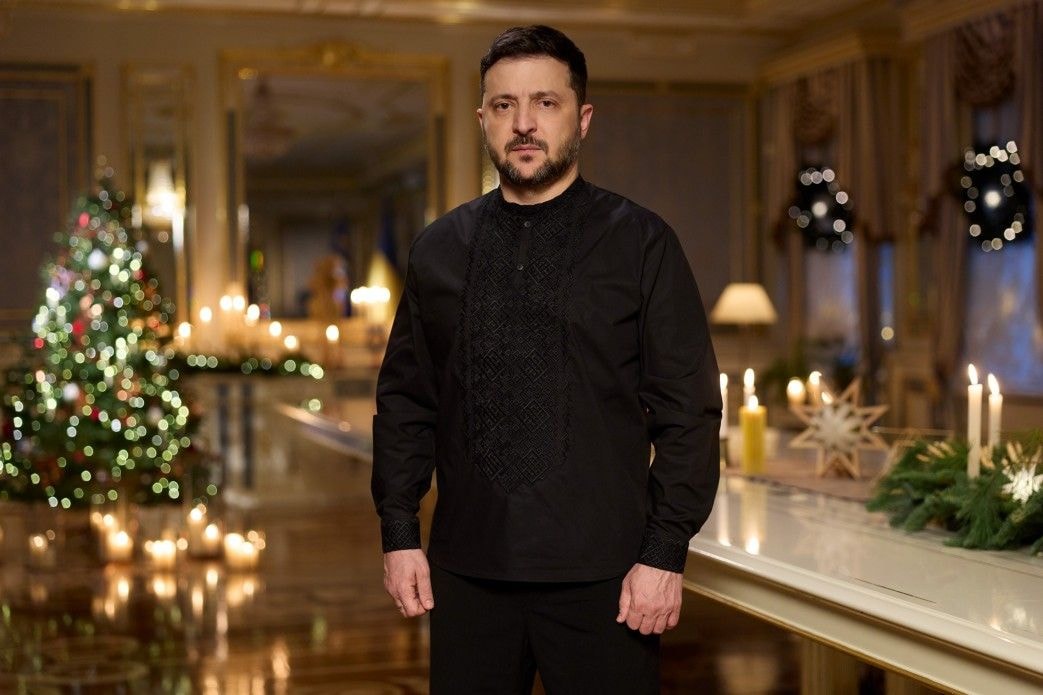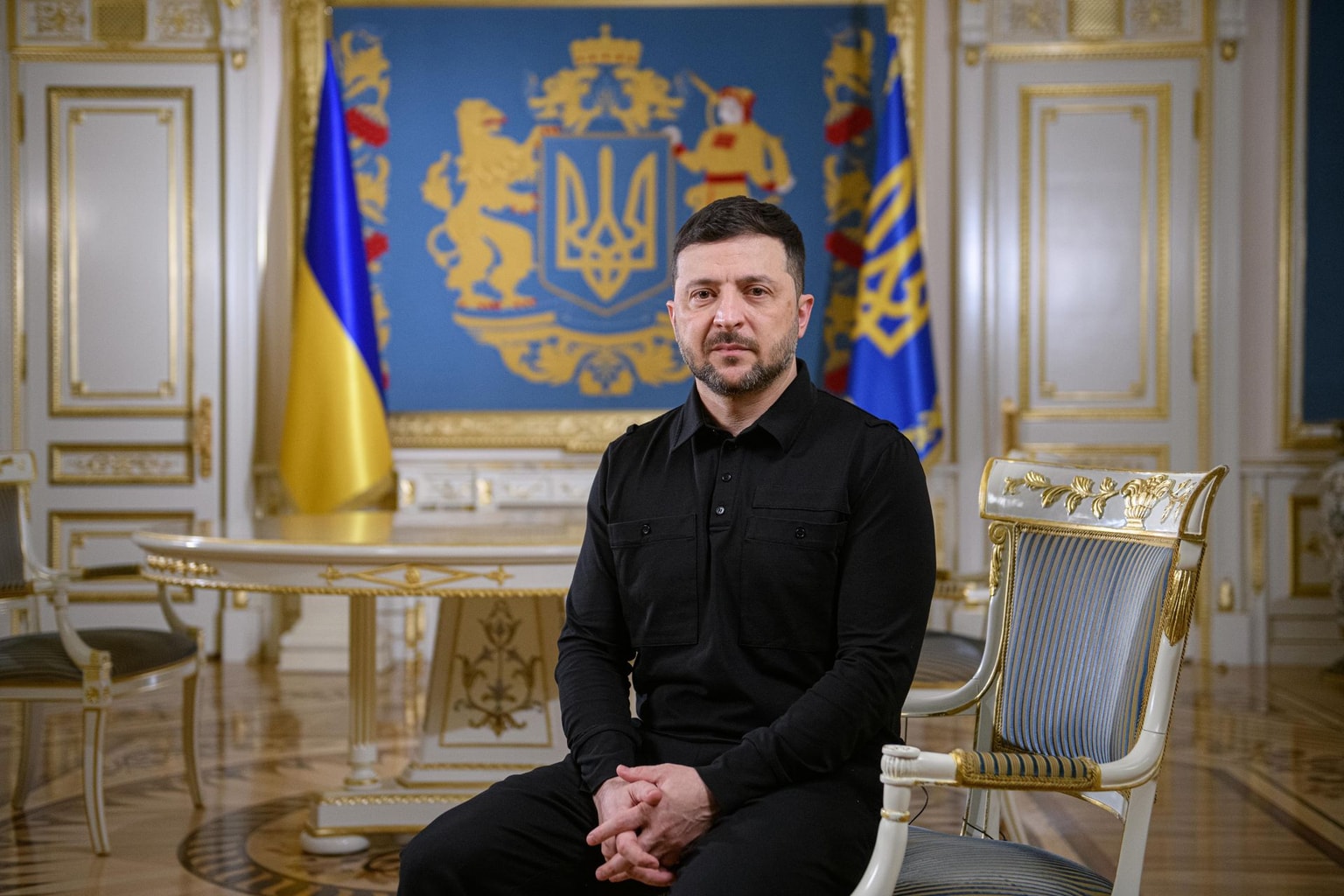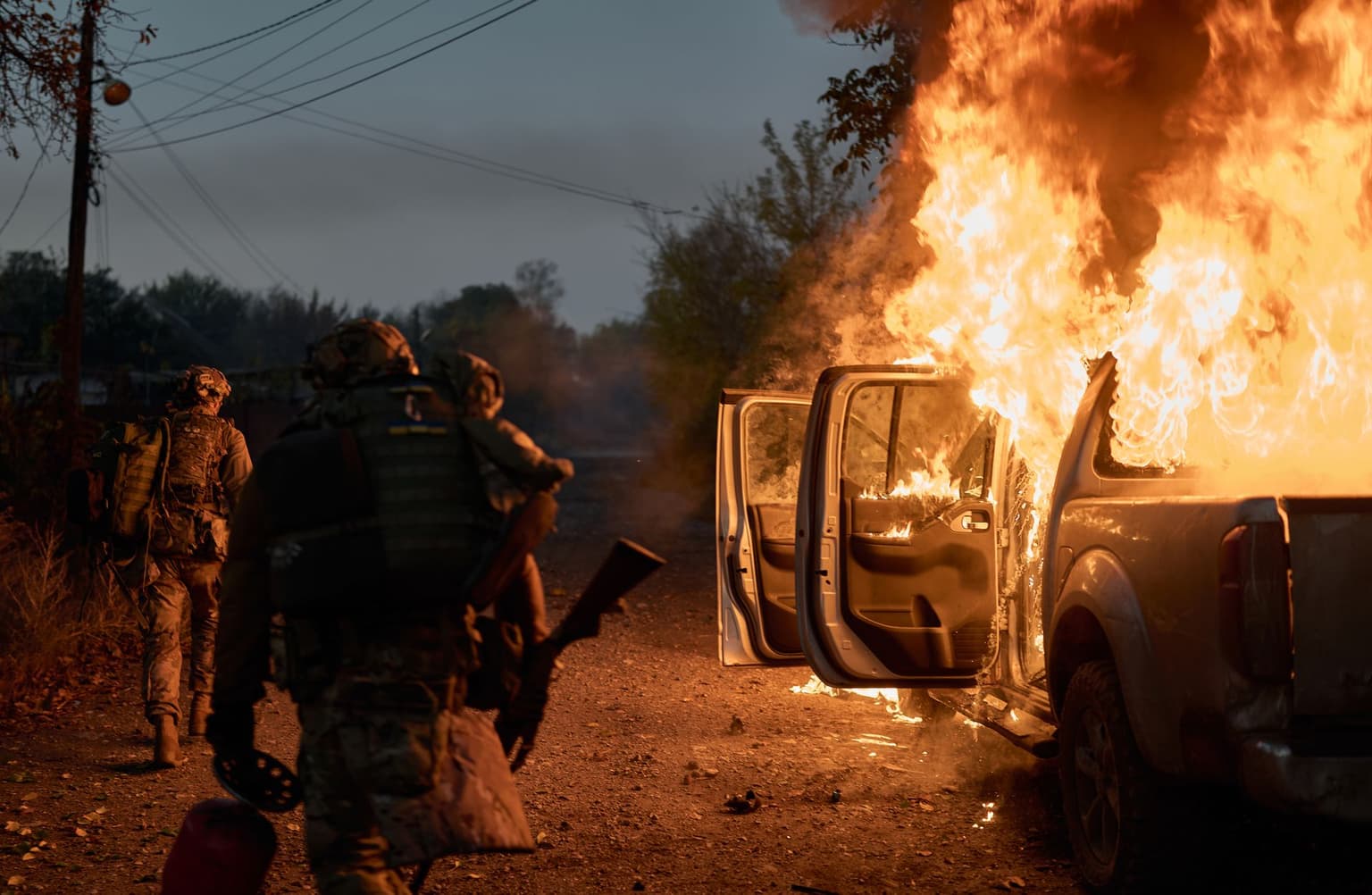
Analysis: Ukraine learns hard lessons from Russia's evolving tactics after clearing Dobropillia 'breakthrough'
Ukrainian soldiers walk past a vehicle recently struck by a Russian FPV kamikaze drone near Kostiantynivka, Donetsk Oblast, Ukraine, on Oct. 16, 2025. (Kostiantyn Liberov / Libkos / Getty Images)
After two and a half months of intense fighting, the red rabbit-ear-looking shape on the battlefield map of Donetsk Oblast is gone for good.
With the liberation of two more villages, Sukhetske and Kucheriv Yar, announced by the Ukrainian military over the weekend, the operation to clear the major Russian breach of Ukrainian lines near the city of Dobropillia is all but over.
Compared to the dramatic alarm of mid-August, when hundreds of Russian troops pierced through a porous and chaotic defense and advanced over 15 kilometers beyond Ukrainian lines, Kyiv can now let out a final sigh of relief as the situation in the sector has been decisively stabilized.
But, despite efforts by President Volodymyr Zelensky and the Ukrainian military leadership to portray it as one, this operation was not a successful counter-offensive, but rather a costly and high-stakes, rapid-reaction operation of the type often described in Ukraine as "fire-fighting."
Meanwhile, though they weren't able to dig in and advance further this time, the circumstances and conditions on the front line that allowed Russian forces to push so far, so quickly — despite the drone-saturated battlefield — raise major concerns for the viability of Ukraine's defensive fight going forward.
Now that the worst has been averted and the front line has leveled out, the deeper lessons about the so-called Dobropillia breakthrough can begin to be learned.
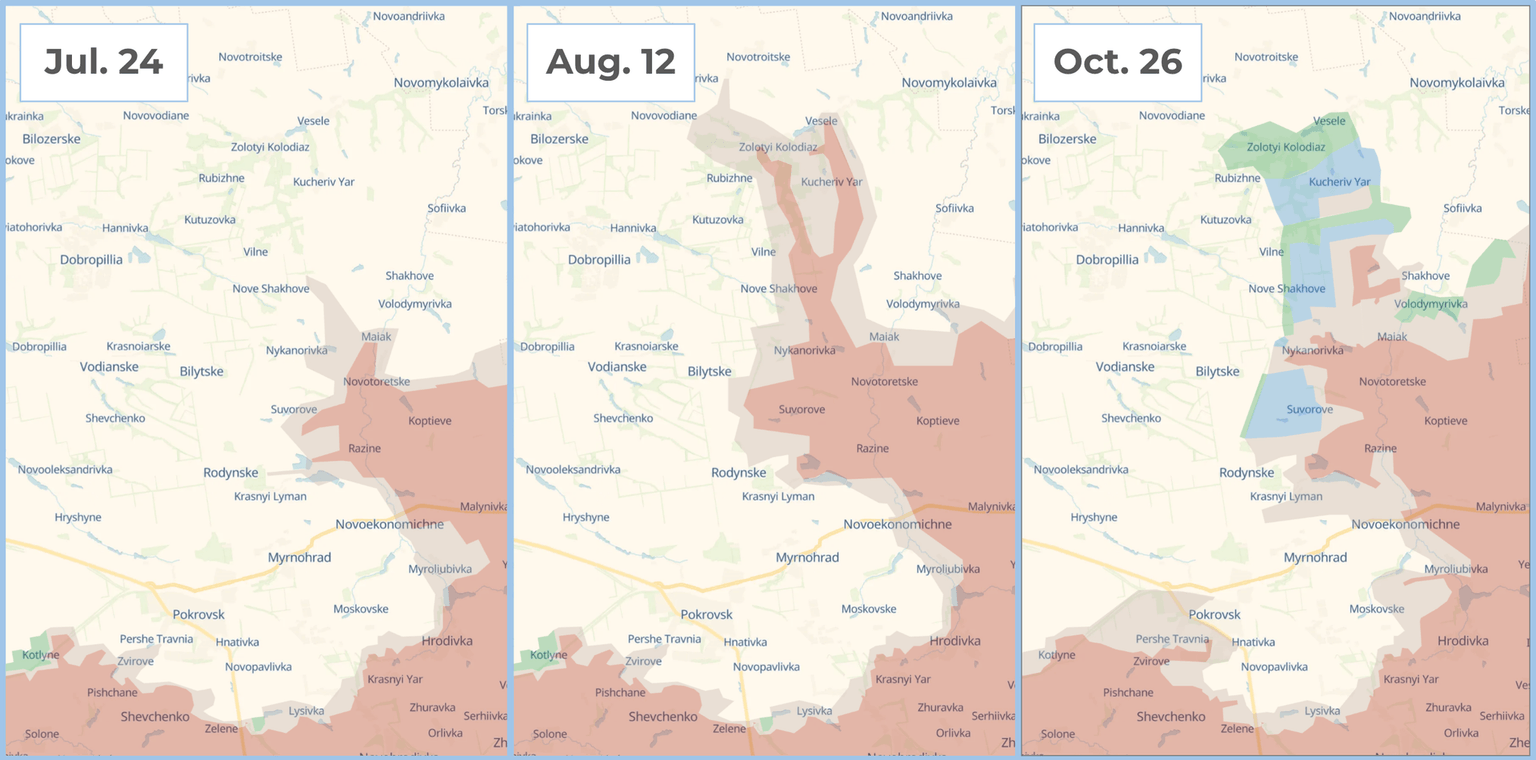
At this point, it's important to set the scene of the operation in the context of Russia's 2025 spring and summer campaign.
Having pushed Ukrainian troops out of Russia's Kursk Oblast for good, Moscow returned in spring 2025 to its immediate strategic aim in the full-scale war against Ukraine: to overrun the remainder of Ukrainian-held Donetsk Oblast.
Two major Ukrainian cities stood in Russia's way, as they continue to do so now.
In the southwest of the region stands the fortress of Pokrovsk, which Russian forces had failed to outflank over the winter.
Further east lies Kostiantynivka, the southernmost city of the so-called "Kramatorsk agglomeration," a chain of four cities from Kostiantynivka through Druzhkivka, Kramatorsk, and Sloviansk, that remains the spine of Ukraine's defense of the region.
Over spring and summer, having failed in frontal assaults on both cities, Moscow concentrated forces to drive a great wedge right between the two, looking to outflank and compromise the defenses of both.
While the rest of the front line remained mostly static, here, sheer numbers, backed by the redeployment from Kursk Oblast of Russia's top drone units, particularly the notorious Rubicon, put immense pressure on the Ukrainian defense, which began giving ground.
By June, Russian forces had decisively crossed the highway between Pokrovsk and Kostiantynivka, and were increasingly tightening their grip on logistics routes into both Ukrainian cities.

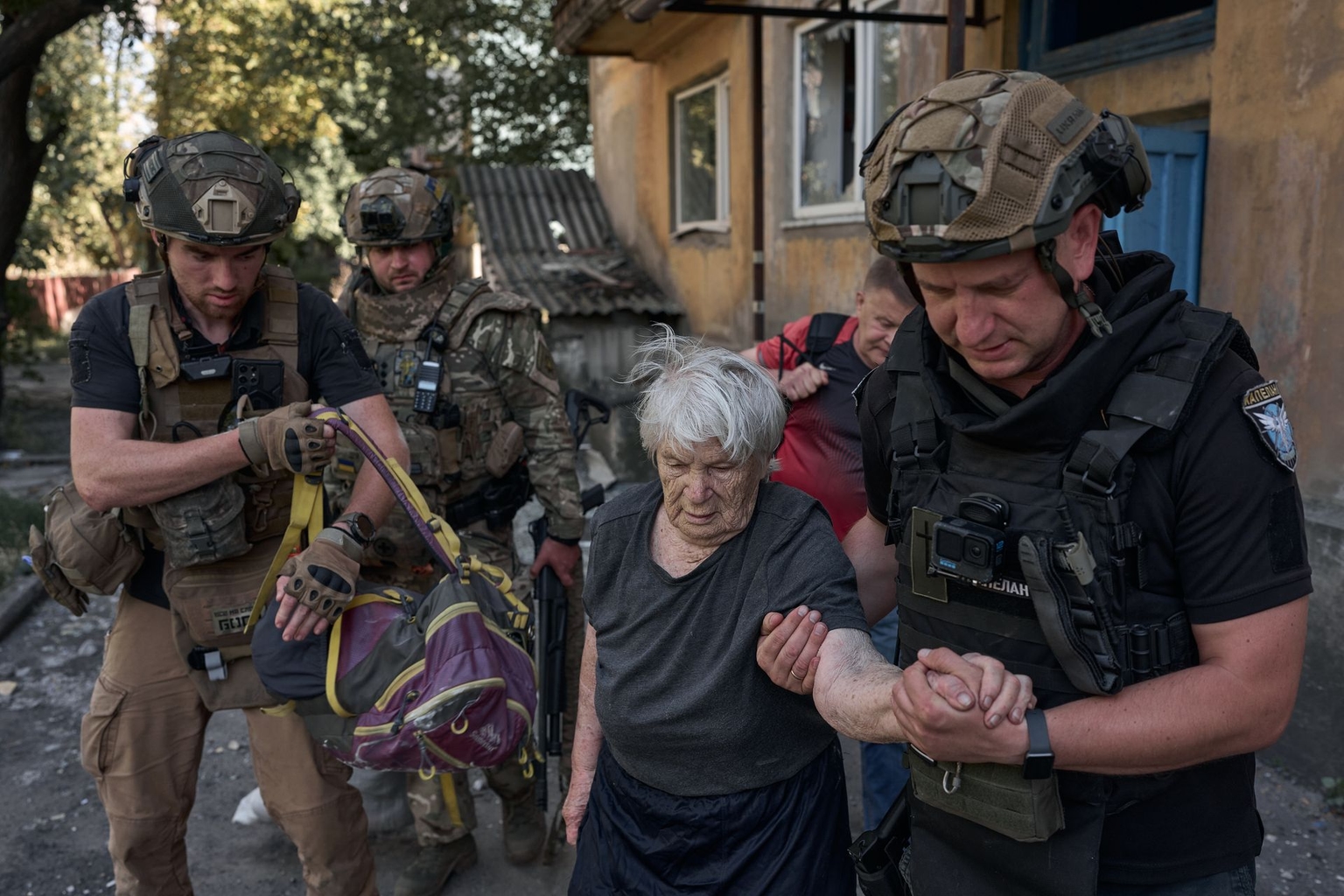
But still, as the Ukrainian leadership is often mocked for saying, the situation was difficult, but under control.
Then came August and Dobropillia.
Over 2025, the ever-increasing domination of drones on both sides of the battlefield has meant that, despite Ukraine's chronic manpower shortage, particularly in the infantry, Russian forces have failed in almost all attempts to mass either vehicles or even infantry in large numbers for a breakthrough.
Albeit slowly, the Russian army has adapted to these changes, instead favoring infiltration tactics, sending infantry forward in groups of two or three, or sometimes alone, to seep between Ukrainian positions while relying mainly on stealth and concealment.
These new tactics have caused problems for Ukraine's defense all across the front line this year.
In Dobropillia, the art of infiltration was taken to the next level.
Perhaps the most important factor in Russia's initial success was its choice of where to make such a daring move.
With numerous ravines and tree lines running from north to south, the area immediately east of Dobropillia provided natural corridors of concealment where advancing Russian infantrymen could move up the battlefield through thick summer foliage, largely undetectable to Ukraine's dense network of reconnaissance drones.
Unlike most standard Russian small-group attacks, where the assault groups try to bypass Ukraine's kill zone of drones and overrun Ukrainian infantry lines, these Russian soldiers instead looked to bypass enemy positions and push deeper and deeper at every opportunity.
As commanders fighting in the area explained to me, Russian troops also showed a more deliberate, more sophisticated use of drones — both for resupplying their assault groups and for providing immediate tactical reconnaissance in the form of drone pilots attached to pairs of infantrymen.
This, of course, was all backed by overwhelming, debilitating Russian firepower, particularly the use of longer-range strike drones and fiber-optic FPVs to strangle Ukrainian logistics, as well as heavy glide bombs launched in their hundreds at Ukrainian positions in the area in the lead-up to the attack.
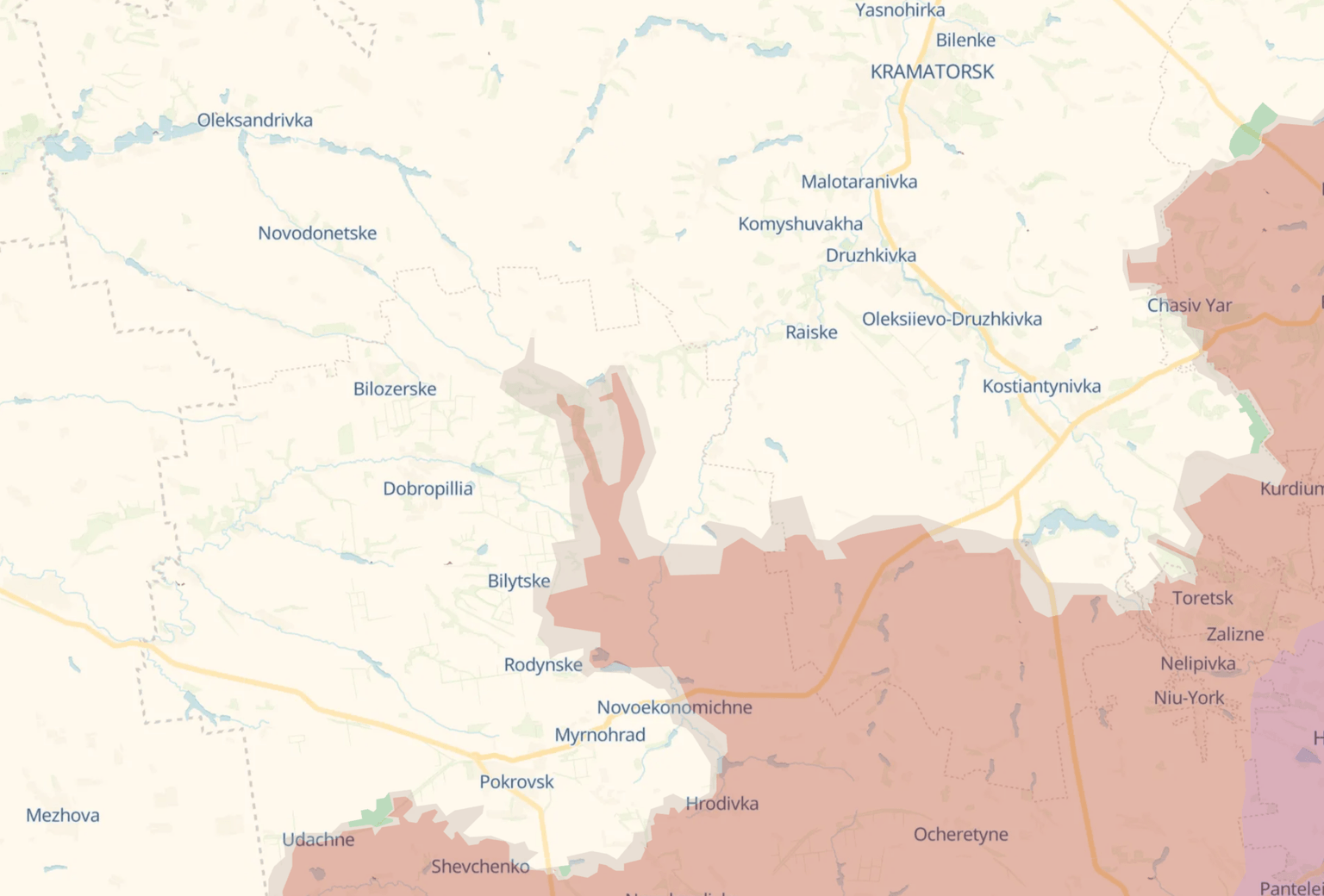

On top of that, Russia identified a weak point in the Ukrainian defense, where two usually competent but exhausted brigades of the National Guard struggled to coordinate combat operations among a disjointed mix of other assigned units.
These tactics, together with where they were directed at, are what allowed Russian forces not only to push several kilometers beyond the Ukrainian first line of defense, but to advance so much deeper.
Once the first Russian infiltration groups broke through, Ukraine’s defenses were quickly thrown into disarray.
Not only were the infiltrating Russian infantrymen difficult to spot in the first place, but once spotted — often deep in a unit’s rear — the situation was often not reported truthfully by commanders, neither higher up, nor to neighboring units, as commanders told me.
This problem of false reporting — one of the cornerstones of Ukraine’s broader struggle with a Soviet-style working culture at all levels of command — came to a head on Aug. 11.
Relied upon by observers both inside Ukraine and abroad, the DeepState mapping project, led by a small Ukrainian team in close contact with commanders across the front line, saw that what they were hearing from the Dobropillia sector was vastly different from how events were being portrayed through official channels.
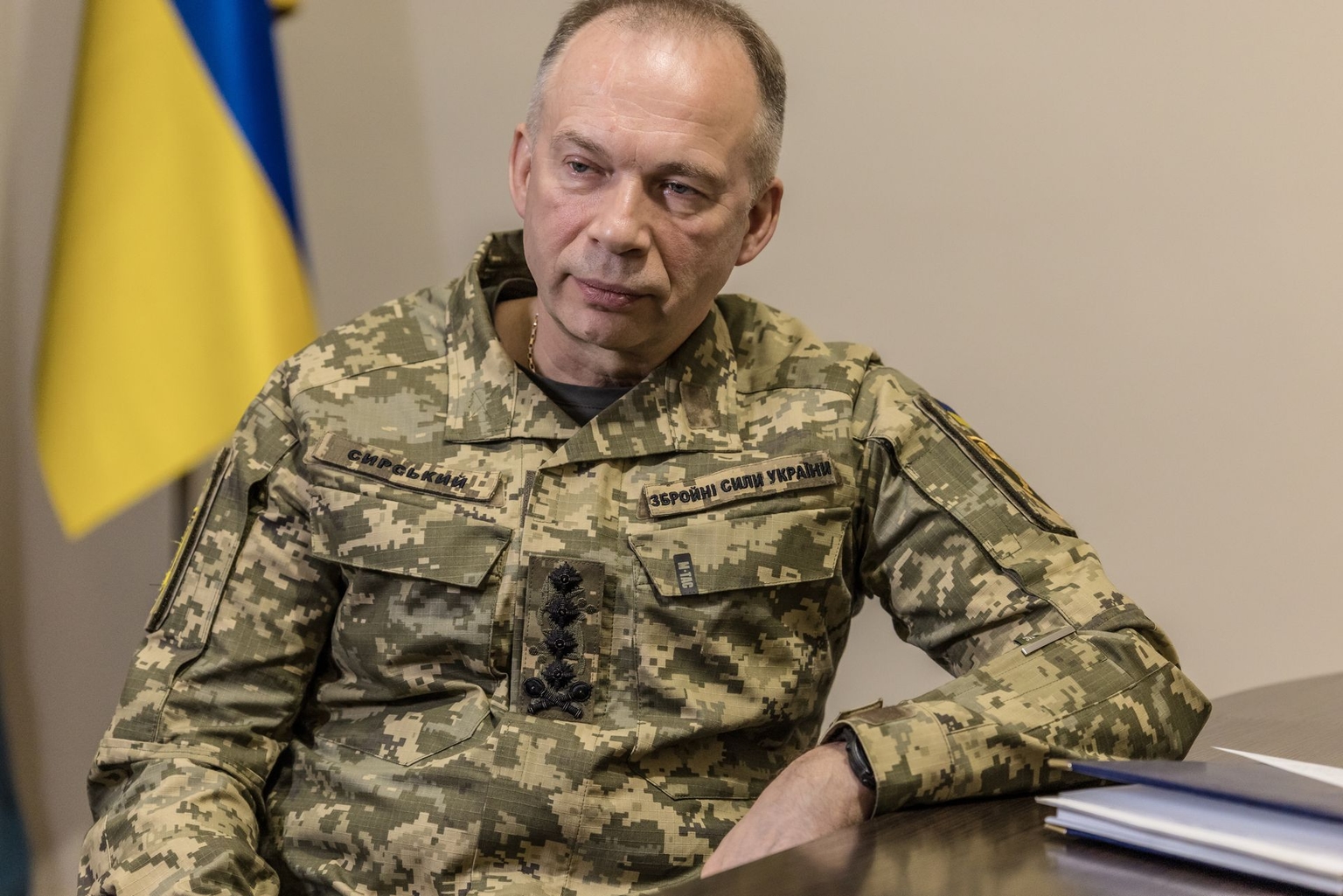
Feeling that the reality on the ground was not understood by Ukraine’s own leadership — let alone by the public — DeepState moved quickly to draw what, while not a perfect representation of territory controlled, accurately showed the seriousness of the situation.
Two red prongs — those same infamous north-facing "rabbit ears" — appeared on the map, all the way up to the village of Zolotyi Kolodiaz and the main road between Dobropillia and Kramatorsk, which had been used daily by Ukrainian logistics as little as a month earlier.
As is often the case, the Ukrainian military leadership, represented by the spokesperson of the Dnipro grouping of forces, downplayed the situation on live television, telling Ukrainians not to believe unofficial maps and claiming that the Dobropillia breakthrough was nothing more than isolated sabotage group activity.
In reality, though, the situation was dire.
If Russia were able to dig in to the area it had overrun, let alone further develop the salient, not only would Pokrovsk and Konstantynivka be outflanked, but Russian forces could approach the Kramatorsk agglomeration itself — not from the east, but from the "rear" in the west.
In turn, together with the new drone control of logistics routes that would come if such gains were consolidated, this could have meant a rapid decline in Ukraine’s prospects of holding on to any of Donetsk Oblast.
With the breach occurring just as U.S. President Donald Trump hosted Russian President Vladimir Putin in Alaska for a showy and fruitless attempt to talk peace, a collapsing front line in Donetsk Oblast would have been the strongest possible card Moscow could take to any future negotiations.
For Kyiv, having fully realized the depth and scope of the Russian operation, this was a scenario that simply could not be allowed to happen, and the military leadership acted accordingly.
Elite Ukrainian units of all shapes and sizes — from the powerful 93rd Mechanized Brigade, boosted by a strong prisoner component, to brigades of the Air Assault Forces, Special Forces, and newly organized assault regiments — Kyiv threw almost everything it had available, and the kitchen sink, at the problem.
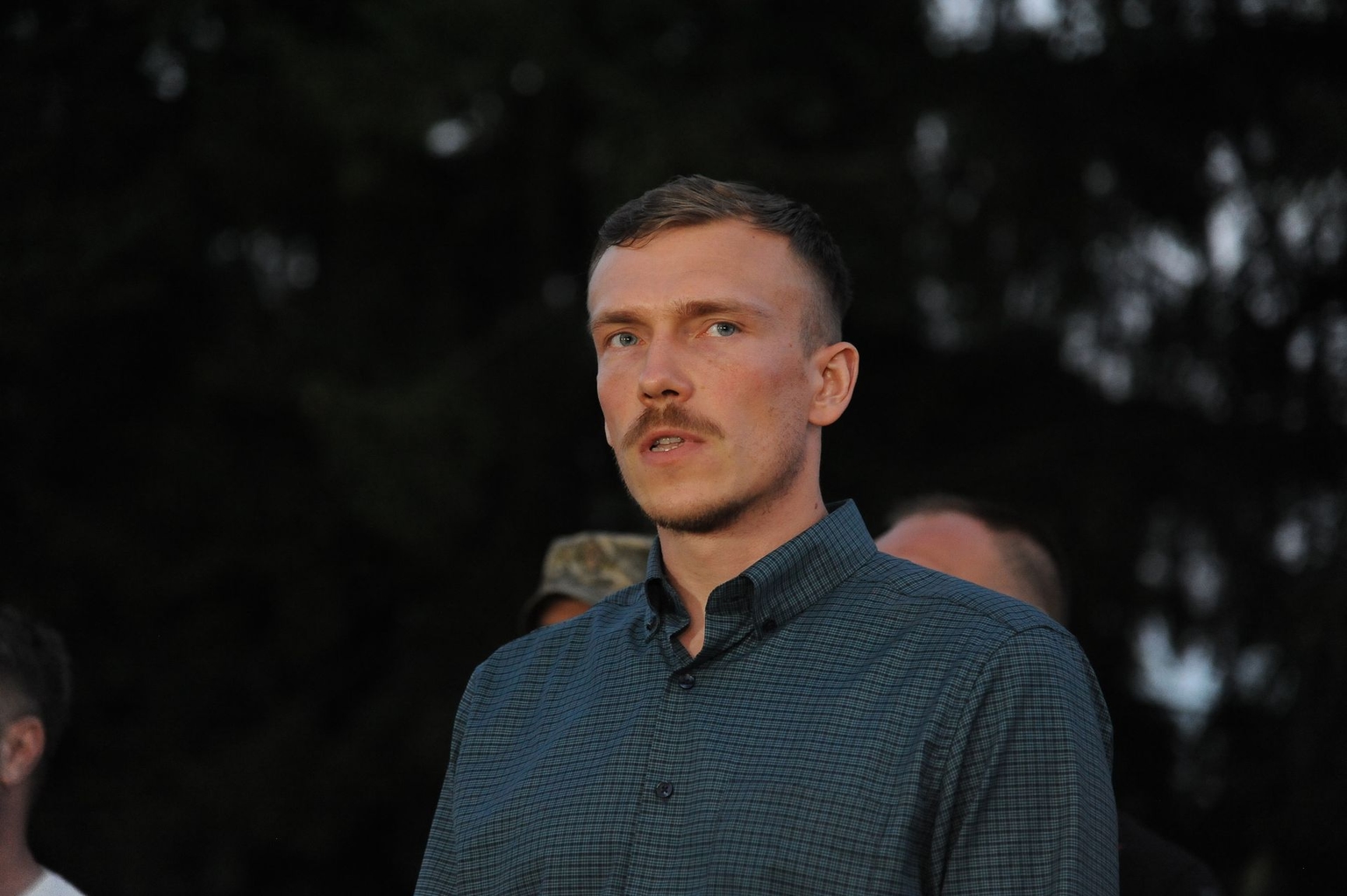
Commanding the response was the 1st Corps of Ukraine’s National Guard, led by arguably the country’s most respected military leader, Azov commander Denys Prokopenko.
Within the first few days of the response, tanks of the 93rd Brigade — jumping on a rare opportunity to deploy with less fear of enemy drone strikes — cleared the village of Zolotyi Kolodiaz, while Air Assault units and the assault regiments ate away at the flanks of the salient.
By August 16, the General Staff reported 910 Russian soldiers killed in action in the area, while photos of those who had surrendered to Ukrainian forces emerged on social media.
In a couple of settlements, including Kucheriv Yar, Russian soldiers held out for months longer, but by then they had long been cut off from the Russian rear, without any hope of relief.
As the chapter of the Dobropillia breakthrough now looks to be finally brought to a close, the lessons are bittersweet for Ukraine.
On one hand, despite the manpower shortage and an almost complete lack of strategic reserves in the fourth year of Russia’s full-scale war, Kyiv is clearly still able to throw serious weight around to respond to the most urgent crises on the front line.
But with no immediate end in sight to hostilities, and with Russian infiltration and drone tactics only improving, the story of Dobropillia is an advanced warning sign of the consequences of Ukraine’s land forces being as overstretched as they are.
Since August, while Dobropillia has stabilized, Russian gains have picked up speed in almost every other key sector of the front line — from once-liberated Kupiansk and Lyman in the north to Dnipropetrovsk Oblast in the south, and of course in Pokrovsk itself, where over the past week hundreds of Russian troops have broken into the city limits.
It remains to be seen if, when, and where the next Dobropillia-style breach could happen.
One small consolation for Ukraine is the arrival of winter, as the cold and the falling leaves should make pulling the same thing off difficult, perhaps impossible, for at least the next few months.
But come spring and summer 2026, Russia will almost certainly try to repeat and one-up its initial success in Dobropillia — and by then, will likely have more tactical tricks up its sleeve.
For Ukraine, the task is clear: to make sure that such a crisis does not become a larger collapse next time — they will have to be ready.

